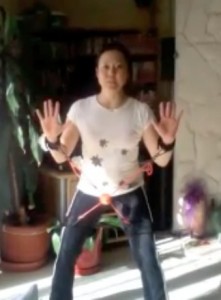The other day, I saw a client who was experiencing major back and buttock pain. This person had trouble walking, severe difficulty sitting, could barely get in and out of the car, getting into bed was excruciating…just about every movement and position was severely painful.
After I got my client feeling much better (one treatment), it turns out that the back was still stiff and the joints were “stuck.” This person most likely had been operating like this for a long, long time.
After querying my client, I discovered that it was the subtle, little things that creeped up and caused the major back pain. Things like driving without a lumbar support; not being aware of proper alignment for simple yoga moves; performing much more sitting than normal—stuff like that. After thinking about it, my client realized that before the pain started there were signs of slight discomfort and stiffness, but they were not significant enough to do anything about.
In general, back and neck pain are rarely a traumatic event. The pain generally creeps up on you, so if you’re aware of the warning signs, you’re much more likely to do something before it becomes an issue.
If you don’t have great health insurance, you’re going to want to read this so you can stay out of the doctor’s office!
Here are some ways to spot the warning signs that neck and/or back pain are coming to visit:
1. You will wake up with morning stiffness. With the proper sleeping position, pillow and mattress support, you should feel refreshed. If you don’t, you might have to investigate why you’re not feeling great.
2. You will have a little, teeny-tiny ache at the base of your neck or lower back. Pain is an indicator like the light in your car that something is wrong. Pay attention to it.
3. You will notice some type of movement deficit. This can manifest as a loss of range of motion when you look up to the ceiling, turning your head, or raising your arm. This is nearly the first warning sign you must heed!
4. You’re less flexible overall. For example, you won’t be able to bring your knees to your chest in yoga class, or it will take a while to get yourself to your “normal” flexibility.
So there you are. I’ve given you subtle secrets to eliminating neck and back pain. If you’re aware and paying attention to how you move and feel, you’re on your way to living a more pain-free life.
If you have any comments to share, feel free to add them!
If you’ve found this article helpful, please email this on to your friends, family and colleagues; click the Facebook “like” button and “tweet” this out to twitter!
 I attended a spine seminar in Los Angeles several weeks ago. Alex McKechnie, the Sports Performance Coach for the Los Angeles Lakers, gave a lecture on how he performs core stabilization using a device he invented, the Core X.
I attended a spine seminar in Los Angeles several weeks ago. Alex McKechnie, the Sports Performance Coach for the Los Angeles Lakers, gave a lecture on how he performs core stabilization using a device he invented, the Core X.